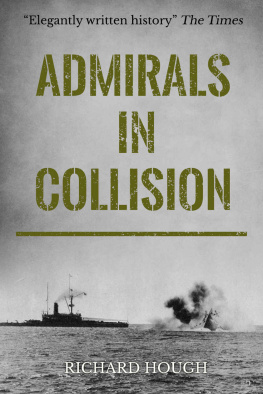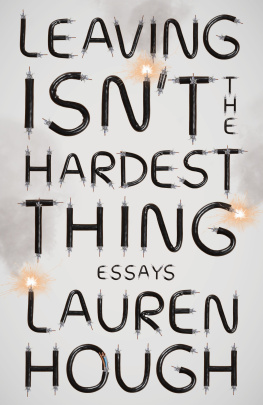Sara Miller McCune founded SAGE Publishing in 1965 to support the dissemination of usable knowledge and educate a global community. SAGE publishes more than 1000 journals and over 800 new books each year, spanning a wide range of subject areas. Our growing selection of library products includes archives, data, case studies and video. SAGE remains majority owned by our founder and after her lifetime will become owned by a charitable trust that secures the companys continued independence.
Los Angeles | London | New Delhi | Singapore | Washington DC | Melbourne
Copyright 2020 by SAGE Publications, Inc.
All rights reserved. Except as permitted by U.S. copyright law, no part of this work may be reproduced or distributed in any form or by any means, or stored in a database or retrieval system, without permission in writing from the publisher.
All third party trademarks referenced or depicted herein are included solely for the purpose of illustration and are the property of their respective owners. Reference to these trademarks in no way indicates any relationship with, or endorsement by, the trademark owner.
FOR INFORMATION:
SAGE Publications, Inc.
2455 Teller Road
Thousand Oaks, California 91320
E-mail: order@sagepub.com
SAGE Publications Ltd.
1 Olivers Yard
55 City Road
London, EC1Y 1SP
United Kingdom
SAGE Publications India Pvt. Ltd.
B 1/I 1 Mohan Cooperative Industrial Area
Mathura Road, New Delhi 110 044
India
SAGE Publications Asia-Pacific Pte. Ltd.
18 Cross Street #10-10/11/12
China Square Central
Singapore 048423
Library of Congress Cataloging-in-Publication Data
Names: Hough, Richard M, author. | McCorkle, Kimberly D, author.
Title: American homicide / Richard M. Hough, University of West Florida, Kimberly D. McCorkle, University of West Florida.
Description: Second edition. | Los Angeles : Sage, [2020] | Includes bibliographical references.
Identifiers: LCCN 2019020463 | ISBN 9781544356037 (paperback)
Subjects: LCSH: HomicideUnited States. | MurderUnited States.
Classification: LCC HV6529.H69 2020 | DDC 364.1520973dc23 LC record available at https://lccn.loc.gov/2019020463
Printed in the United States of America
This book is printed on acid-free paper.
19 20 21 22 23 10 9 8 7 6 5 4 3 2 1
Acquisitions Editor: Jessica Miller
Editorial Assistant: Sarah Manheim
Production Editor: Andrew Olson
Copy Editor: Ashley Horne
Typesetter: Hurix Digital
Proofreader: Susan Schon
Indexer: Karen Wiley
Cover Designer: Candice Harman
Marketing Manager: Jillian Ragusa
Preface
What we are shown through Hollywood and the media is a carnival mirror reflection of realitydistorted and out of proportion. Hollywood dramatizations of criminal homicide may entertain, but they are not intended to inform. The impression one might get is that serial killers are everywhere and that no one is safe from this increasing danger. This is obviously far from accurate, and it often falls to college and university professors to present the balanced picture of homicide, supported by current research, to make sense of what we learn. We are often asked by our students how we explain the rising homicide or violence rates. We endeavor in this book to address this inaccurate perception of increasing homicide rates and other myths about the justice system.
Over many years of teaching courses on homicide, we were never quite satisfied with the few available texts. They did not, in our view, provide either the right balance or emphasis. While there were some early high-quality books devoted to the study of homicide, these were not as useful or relevant to the current student of homicide. We continually found that we had to supplement them with extensive readings. The result was this book, which we believe will be useful to faculty everywhere who take on the task of explaining to students why and how people kill and what society does about it. This book provides any instructor the ability to credibly approach the subject of homicide and present to students something more than a criminology text with limited discussion of practical issues or a book of sensationalized news accounts with the occasional empirical observation thrown in.
The text examines homicides and suspicious deaths in the United States. Several introductory chapters include definitions of homicide, measurement, trends in homicide, and theories of why people commit homicide. The book addresses all types of homicide and gives additional attention to the more prevalent types of homicide in the United States. Therefore, we include full chapters on confrontational homicide, intimate partner homicide, and family homicide. As Daly and Wilson (1988) noted, Most killers turn out to be ordinary folks (p. ix). We also cover extraordinary homicide, which includes more rare and sensational types of homicide. The investigations chapter is a hallmark of the book. Contemporary students are very interested in homicide investigations, even if they do not plan or hope to become investigators. The chapter addresses the structure and function of homicide units and the interactions that investigators have with various other players, including media, medical examiners (MEs), crime scene technicians, prosecutors, and more. We also examine in depth in one full chapter the process of a criminal homicide case through the courts, an area of great interest and importance. The final chapter discusses key contemporary issues about those impacted by homicide and what society can do about those impacts.
We recognize that criminology is the foundation for criminal justice. As such, we are in an era that tries harder than ever to use intelligence-led and evidence-based strategies and research to guide policymakers and practitioners. We provide and comment on suggested interventions that reflect this fact. The increasing role of the social sciences in the construction of policies and programs is key to any comprehensive discussion of violence and murder in society. We did not want to set considerations of policy as a stand-alone chapter, and so, where appropriate, policy impacts are noted. It is our hope that instructors might incorporate some level of discussion at every available opportunity to frame the practical context of theories and known or observed facts. We like to ask students to bring to class current news articles related to homicide crime that might serve as discussion points as we apply the theoretical constructs in the textbook. We hope current users of the book will do this.














